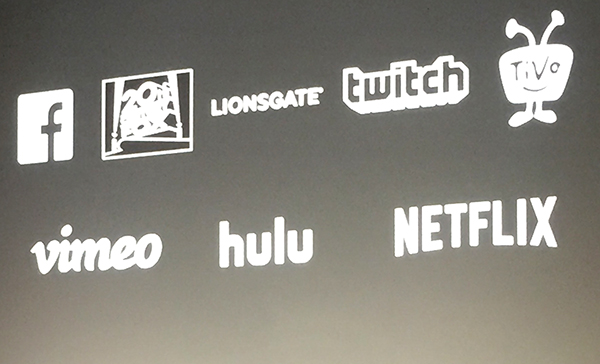Oculus Chief Technology Officer John Carmack is directly responsible for making Minecraft and Netflix happen for Oculus in what could end up being the critical apps that catapult mobile VR into something people use day after day after day.
“I got the email at 12:35 a.m. this morning that the deal was signed…it was really really down to the wire,” Carmack said about a deal for the game ironed out between the CEOs of Facebook and Microsoft. “I think it is the single most important application that we can do for virtual reality, to make sure that we have an army of fanatic, passionate supporters that will advocate why VR is great.”
While it was a deal between the CEOs that needed to be ironed out to bring the game to Oculus, the technical project was Carmack’s “holy grail” and a quest he has been on for a long time.
“If this doesn’t happen I’m going to cry,” he said.
The game is coming to both Gear VR and Oculus Rift but additional details aren’t coming from Oculus right now. Netflix is already out now on Gear VR, with work done by Carmack in partnership with Netflix. Together, the apps mean Oculus has secured for its platform two of the most popular sources of entertainment in the world.
Netflix alone is reportedly responsible for as much as 37 percent of Internet traffic during peak hours in North America and Minecraft was purchased by Microsoft for $2.5 billion because it is the most popular game in the world.
Just yesterday some commenters on Reddit were expressing frustration Carmack hasn’t been focused, nor has he directed Oculus engineers or researchers to get focused, on mobile position tracking for the Gear VR. Armed with these two apps, however, Carmack’s efforts echo those of Apple in developing the first iPhone, which provided Google Maps and Youtube right on the home screen as core functionality of the device. What’s more, Netflix is just one of a number of content partnerships Oculus announced.
Now that Carmack has secured these entertainment platforms for Oculus and mobile VR he will turn his attention to one of three directions, one of which is using stereo cameras to nail down mobile positional tracking, which could ultimately untether users from a PC for walk-around VR.
I can’t wait to see what he comes up with next.



























